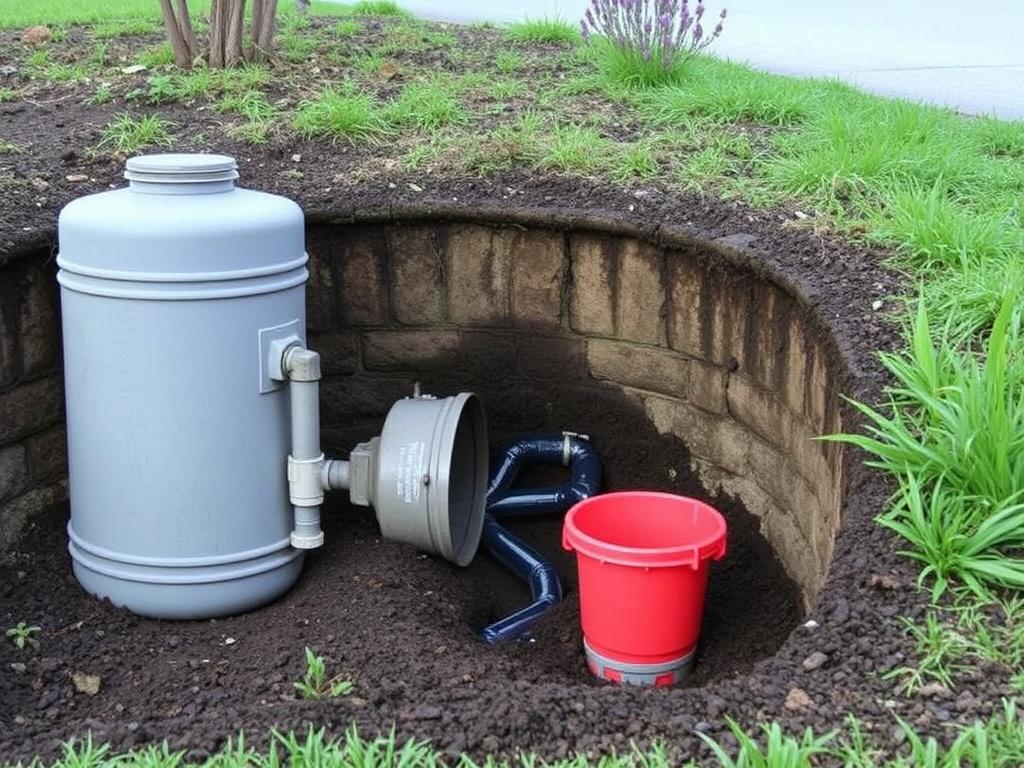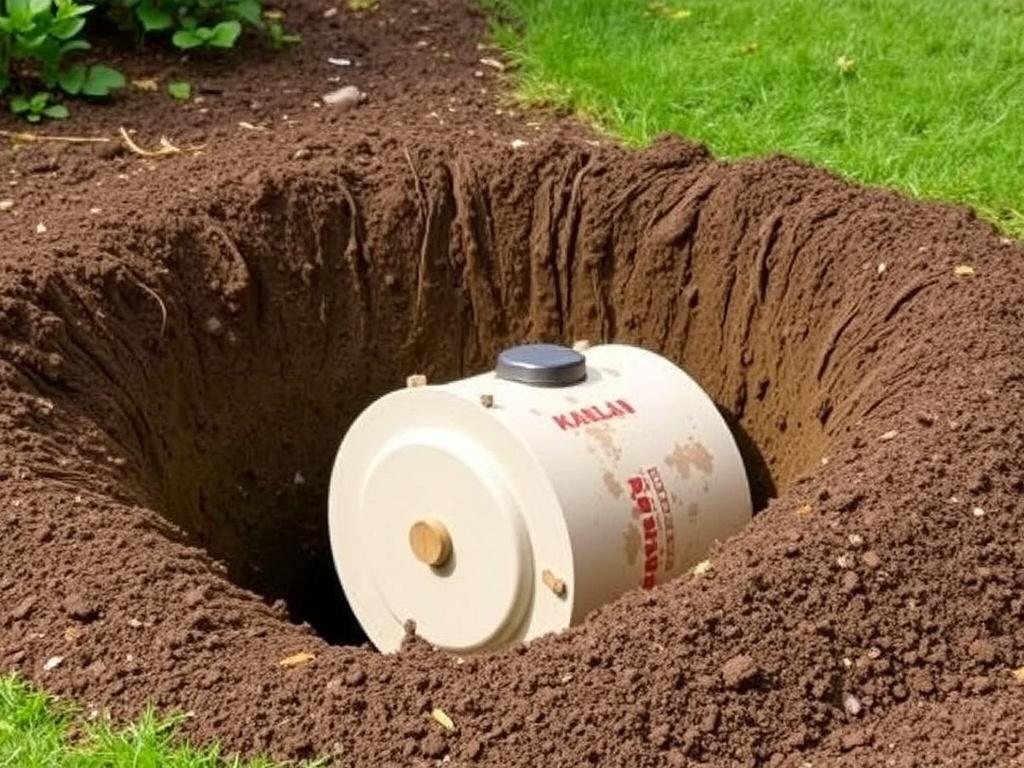Septic systems are an essential part of many homes, especially in rural or suburban areas without access to municipal sewage. While septic tanks generally operate quietly and efficiently, there are times when things can go wrong—one of the most urgent being a septic tank backup. If you ever find yourself facing a septic tank backup, it’s vital to act quickly and know the emergency steps that can prevent further damage and costly repairs. In this article, we will explore what septic tank backup means, why it happens, how to recognize the signs early, and most importantly, the emergency steps you should take to handle the situation effectively.
- Understanding Septic Tank Backup
- Signs of a Septic Tank Backup You Should Never Ignore
- Immediate Emergency Steps to Take During a Septic Tank Backup
- Step 1: Stop Using Water Immediately
- Step 2: Turn Off the Main Water Supply
- Step 3: Avoid Contact with Sewage
- Step 4: Locate Your Septic Tank and Drain Field
- Step 5: Call a Professional Septic Service Immediately
- Step 6: Document the Problem and Costs
- Additional Precautions and Tips to Prevent a Septic Tank Backup
- How to Manage Cleanup Safely After a Septic Tank Backup
- Protect Yourself First
- Remove the Sewage-Contaminated Materials
- Use Disinfectants and Cleaners
- Dry Out the Area Fully
- Common Causes of Septic Tank Backup: What Triggers These Emergencies?
- How to Communicate with a Professional During a Septic Tank Backup Emergency
- Technological Advances in Septic System Monitoring
- What to Expect During Septic Tank Repair or Replacement
- Cost Considerations for Emergency Septic Tank Backup Services
- Legal and Environmental Implications of Septic Tank Backup
- Summary Checklist: What to Do in a Septic Tank Backup Emergency
- Conclusion
Understanding Septic Tank Backup
Before diving into emergency steps, it’s important to understand what septic tank backup actually involves. A septic tank is a buried, watertight container designed to collect wastewater from your home. In normal operation, solids settle to the bottom, and the liquid effluent flows out to a drain field or leach field for natural filtration. When your septic system backs up, this flow is disrupted, causing wastewater to return into your home or surface areas, often through toilets, drains, or even the yard.
Septic tank backup is often a sign of a serious problem, such as a clogged drain field, a full tank that hasn’t been pumped out in years, tree root invasion, or broken pipes within the system. Ignoring a septic backup can lead to health hazards, property damage, and expensive repairs. Recognizing the problem early and knowing what emergency steps to take can save you time, money, and a lot of stress.
Signs of a Septic Tank Backup You Should Never Ignore
One of the best ways to prevent a full-blown septic tank crisis is to spot the warning signs early. Here are some common indicators that your septic system might be about to back up:
- Slow-draining toilets, sinks, or bathtubs.
- Gurgling sounds coming from plumbing drains.
- Unpleasant, strong odors around your drains or septic tank area.
- Pooling water or muddy soil near your septic tank or drain field.
- Septic tank alarm sounds or visual indicators (if your system has one).
- Toilet backflow: water bubbling or backing up when flushing.
Noticing any of these signs is your cue to act fast. The longer you wait, the more severe the backup can become, increasing cleanup costs and risking contamination.
Immediate Emergency Steps to Take During a Septic Tank Backup

When a septic tank backup occurs, your response time is crucial. Here are the emergency steps to help you manage the situation safely and reduce damages:
Step 1: Stop Using Water Immediately
The first and most important emergency step during a septic tank backup is to stop all water use in your home right away. This includes pausing activities like flushing toilets, washing dishes, running laundry machines, or taking showers. Using more water adds pressure to the already overloaded system, worsening the backup and potentially causing sewage to enter your home.
Step 2: Turn Off the Main Water Supply
If water usage is critical, consider shutting off the main water supply to your home to prevent any more water from entering the septic tank. This can help contain the backup and limit the spread of sewage. Look for your home’s water shut-off valve, which is usually located near the water meter or where the main water line enters your house.
Step 3: Avoid Contact with Sewage
Septic tank backups involve untreated wastewater, which contains harmful bacteria and pathogens. Never attempt to clean or handle the sewage without proper protective gear such as gloves and boots. Avoid letting children or pets near the contaminated area and keep the space well-ventilated to disperse any foul odors.
Step 4: Locate Your Septic Tank and Drain Field
Knowing where your septic tank and drain field are located can help you better assess the situation and communicate clearly with professional help. Typical placement for septic tanks is near the home, buried underground and marked by access lids or inspection ports.
Step 5: Call a Professional Septic Service Immediately
Septic tank backups are not a DIY issue. Contact an experienced septic system professional who can pump out the tank, inspect for damage, and repair broken components. Do not attempt to use chemical additives or other home remedies; these usually do more harm than good and might delay proper diagnosis.
Step 6: Document the Problem and Costs
It’s wise to document what you observe during the backup, including photos and notes. Also, keep receipts and invoices related to septic services and cleanup. This record can be helpful for insurance claims or addressing any warranty issues with your septic system.
Additional Precautions and Tips to Prevent a Septic Tank Backup
While emergency steps are critical when a septic system backs up, prevention is always better than cure. Keeping your septic system healthy minimizes the risk of backups.
Here are some valuable tips to prevent septic tank backups:
- Schedule regular septic tank pumping every 3 to 5 years, depending on your household size.
- Limit water usage to reduce strain on the system.
- Avoid flushing non-biodegradable items such as wipes, sanitary products, or grease.
- Direct rainwater and roof drains away from the septic field.
- Be mindful of what you pour down the drains; chemicals and oils can damage bacteria essential for the system’s operation.
- Do not drive or park heavy vehicles on your drain field.
- Maintain your septic system inspections regularly, at least once a year.
How to Manage Cleanup Safely After a Septic Tank Backup

If sewage has entered your home, prompt and thorough cleanup is necessary to safeguard your health and prevent mold growth. Here are the essential cleanup considerations:
Protect Yourself First
Wear rubber gloves, boots, and a mask to protect from pathogens and odors during the cleanup process. Make sure children and pets stay away until everything is sanitized.
Remove the Sewage-Contaminated Materials
Porous materials like carpets, rugs, drywall, and upholstered furniture soaked in sewage may need to be discarded, as they can harbor bacteria and be hard to sanitize effectively.
Use Disinfectants and Cleaners
After removal of visible sewage, clean all affected hard surfaces thoroughly with a bleach solution or other disinfectants designed to kill bacteria and viruses linked to septic backups.
Dry Out the Area Fully
Use fans, dehumidifiers, and open windows to ensure the area dries quickly. Dampness can encourage mold and mildew buildup, which pose additional health risks.
Common Causes of Septic Tank Backup: What Triggers These Emergencies?
Understanding the root causes of backups helps you avoid conditions that lead to emergencies. Here’s a table summarizing common septic tank backup causes and their explanations:
| Cause | Description |
|---|---|
| Full Septic Tank | When the tank isn’t pumped regularly, solids accumulate and reduce space, causing backups. |
| Clogged Drain Field | Soil becomes saturated or blocked, preventing effluent absorption and causing system backup. |
| Piping Blockages | Blockages from debris or buildup within pipes restrict flow and lead to back pressure. |
| Tree Root Intrusion | Roots can invade pipes and tanks, damaging systems and causing leaks/backups. |
| Excessive Water Usage | Overloading the system with water strains the septic tank and drain field. |
| Improper Waste Disposal | Flushing harmful substances kills bacteria needed to break down waste, damaging system function. |
How to Communicate with a Professional During a Septic Tank Backup Emergency
Knowing the right questions to ask and what information to provide can make your interaction with a septic service company more efficient during an emergency:
- Describe the symptoms you’ve observed (slow drains, odors, visible backup).
- Inform them if you’ve stopped using water and shut off the main valve.
- Provide the last time the tank was pumped and any history of system problems.
- Ask about their availability for emergency response.
- Request an estimate for inspections, pumping, and repairs.
- Inquire about preventive maintenance plans to avoid future backups.
Good communication helps professionals diagnose the issue quickly and begin emergency repairs without delay.
Technological Advances in Septic System Monitoring
Modern technology offers solutions to help homeowners avoid septic tank backup emergencies by monitoring tank levels and system health remotely. Some of these advances include:
- Septic Alarm Systems: Installed on tanks to alert homeowners when sludge levels are high or problems occur.
- Smart Sensors: Devices send real-time data to your smartphone or service provider about tank conditions.
- Remote Inspections: Video cameras and drones can assess inaccessible parts without excavation.
Investing in these technologies can offer peace of mind and early warnings to prevent costly septic tank backups before they happen.
What to Expect During Septic Tank Repair or Replacement
If your septic tank backup is due to serious damage or failed components, you might need repairs or full replacement. Here’s a step-by-step overview of what the process typically involves:
- Initial Inspection: Professionals locate the tank, access ports, and drain field to diagnose the issue.
- Pumping and Cleaning: Remove existing wastewater and solids from the tank for proper assessment.
- Component Repair: Fix broken pipes, seals, or baffles within the septic system.
- Drain Field Restoration: In some cases, the soil or piping in the drain field may need replacement or repair.
- Tank Replacement: If the tank is cracked or deteriorated, replacement might be necessary.
- Testing and Inspection: After repairs, ensure the system functions properly before backfilling the area.
Professional septic services will guide you through the entire process and advise on cost-effective, long-term solutions.
Cost Considerations for Emergency Septic Tank Backup Services

Emergency septic backup services can be expensive, but costs vary depending on the severity of the backup and the repairs required. Here’s a breakdown of common costs homeowners may face:
| Service | Typical Cost Range (USD) |
|---|---|
| Septic Tank Pumping | $250 – $500 |
| Inspection and Diagnosis | $100 – $300 |
| Minor Pipe Repairs | $200 – $1,000 |
| Drain Field Repairs | $1,000 – $4,000 |
| Full Septic Tank Replacement | $3,000 – $7,000+ |
| Emergency Service Call Fees | $100 – $300 additional |
Keep in mind that regular maintenance and inspections can reduce the likelihood of expensive emergency repairs.
Legal and Environmental Implications of Septic Tank Backup
A septic tank backup is not just a household inconvenience; it has serious environmental and legal consequences. Unsafe sewage discharge can contaminate groundwater, streams, and lakes—posing health risks to your community. Additionally, many local governments have strict regulations regarding septic system maintenance and failure. Failure to manage septic backups responsibly could lead to fines and legal liabilities.
If a septic backup occurs, you may be required to report it to your local health department or environmental agency. Prompt professional cleanup and system repair are necessary to comply with health and safety laws.
Summary Checklist: What to Do in a Septic Tank Backup Emergency
For quick reference, here is a handy checklist of emergency steps to follow when facing a septic tank backup:
- Stop all water use immediately.
- Turn off your home’s main water supply if necessary.
- Avoid contact with sewage and contain the affected area.
- Locate your septic tank and drain field.
- Contact a professional septic service for immediate help.
- Document the problem with photos and notes.
- Follow professional advice for cleanup and repair.
- Schedule regular maintenance to prevent future backups.
Conclusion
Facing a septic tank backup can be a frightening and messy ordeal, but acting swiftly and following the right emergency steps can protect your home, health, and wallet. Stop water use, avoid exposure to sewage, and call in septic professionals as soon as you notice signs of trouble. Regular maintenance and vigilance are your best defenses against septic system failures. Remember, the key to managing a septic tank backup is timely response combined with smart prevention. With the right knowledge and preparation, you can weather any septic emergency with confidence.
Помогла вам статья?






